Creating new lessons every year is my biggest motivator. I love taking a proven technique and finding another subject to tie it with. This is one of my favorite challenges of teaching art. Some lessons are absolute stand-outs; the technique is kid-friendly, the subject interesting and the achievement level is high. When a lesson reaches this status, I share it, either for free or in my store.
On the other hand, I have some misses, too. You know the ones; the grand idea of how something will work and it ends up being a flop. I don’t mind if the project doesn’t look great, but I do care if the kids lose interest or if they were frustrated with the process.That’s not successful to me.
My favorite art lessons of 2013
I’m going to be honest and tell you that most of my favorite lessons are either in my Beyond the Basics E-course (30 new lessons!) or I have them packaged as PDF art lessons which will be unveiled when my new store launches. Still, I can’t resist sharing….
Paul Klee’s Castles Art Lesson for 5th grade. This started out horribly. The kids drew geometric shapes with a thin waterproof marker and then painted with pan watercolors. Painting with watercolors is hard without a resist because the colors mingled so quickly on the small canvas. After the watercolors dried, I asked the children to outline their thin marker lines with a thick marker line. What a difference! Suddenly we were all doing happy dances!
Color, Line and Pattern for Kinders. Every once in awhile a lesson takes on a life of it’s own. The first day of classes for my wee kinders allowed them to express themselves through paint. No matter the skill level of the child, each one had a wonderful time mixing colors, drawing their lines and creating art. I love this lesson because of the energy it created in the art room. Happy, happy place.
Penguin Art Project for second grade. Penguins are pretty cute little guys and based on how many times this project was pinned (over 12K!) it seems as though everyone else likes penguins too. What I loved most about this lesson is that we didn’t use templates and instead created our own little bodies. I adapted this lesson from an art studio and the one element I loved was using the warm and cool painted backgrounds.
Chalk and Tempera Portraits for K-2nd. Hands down the BEST portrait art lesson I have done so far. I love the tempera and chalk combo. Honestly, my kinder group was extraordinary this year. They had the skills of many second grade students which maybe why this project felt so successful. I know the kids loved making their portraits but I know how many pleased parents there are as the result of having these sweet portraits of their children.
My least Favorite Art Lessons of 2013
Apple Art Project for Kinders. As much as I loved the concept of this lesson, I wasn’t thrilled with the chosen technique. I had created apple templates for another project and decided to use them to trace in this lesson. Often I will use a template to advance to the more critical technique in the lesson, which in this case was to make secondary colors. But I thought the project fell a little flat, especially compared to other kinder lessons I had done. This lesson felt a little too structured and a little too crafty for my art room.
Valentine’s Day Pointillism for 3rd grade. I have never had much success with pointillism. Maybe it’s the length of time it requires to do a good job. I wasn’t too fond of the end-result of this project mostly because I failed to design the right technique. I needed more time to consider the success factor of the paint colors on white paper. The kids did have fun working with the Q-tips but they were bored with it after a while. And so was I. We switched to making a cool gold frame to go around the painting, which was really fun and provided a great learning opportunity for spatial awareness (we didn’t measure!).
Chalk Penguin for 5th grade. I did this lesson with my second graders a few years back so when I needed a quick lesson to fill in the last day of class for my first rotation, I thought that introducing this lesson to my fifth graders would be a breeze. I didn’t provide the same directed instruction for drawing the penguin as I did for my 2nd graders and instead placed pictures of penguins on the white board. Drawing penguins from pictures didn’t seem overly hard but what I did find, was that most kids goofed off with the lack of direction. I was a bit shocked as this particular group of 5th graders had always been very creative. Many times, I geared art lessons to include more free-expression for this group of kids because they seemed to need it. I was a bit disappointed with their efforts and can claim that my second graders did a far better job!
Do you have a favorite lesson this year? What about the bombs???? I’d love to hear what worked and what didn’t, so please share away!
ARE YOU A SPARKLER? Over 300 art lessons are available inside the Members Club. Access to videos, resources & trainings for one low monthly fee.
CLICK THE IMAGE TO SIGN UP FOR NOTIFICATION OF OUR NEXT ENROLLMENT







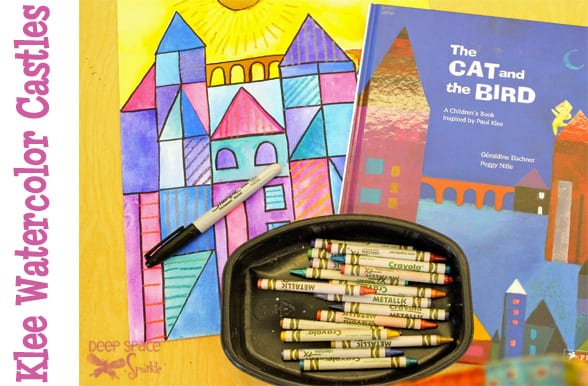
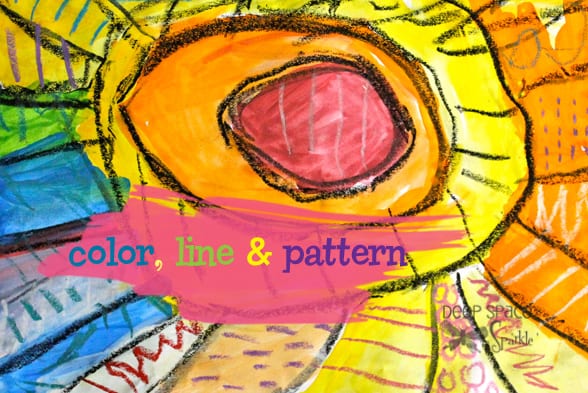
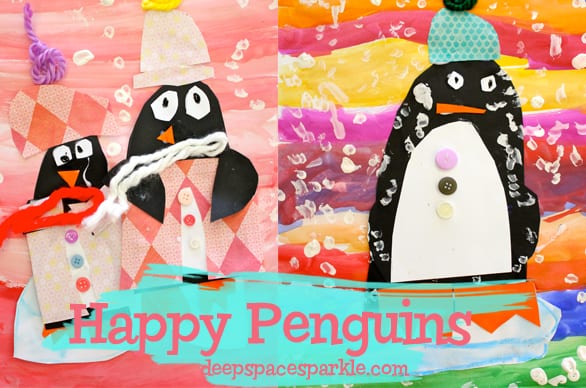
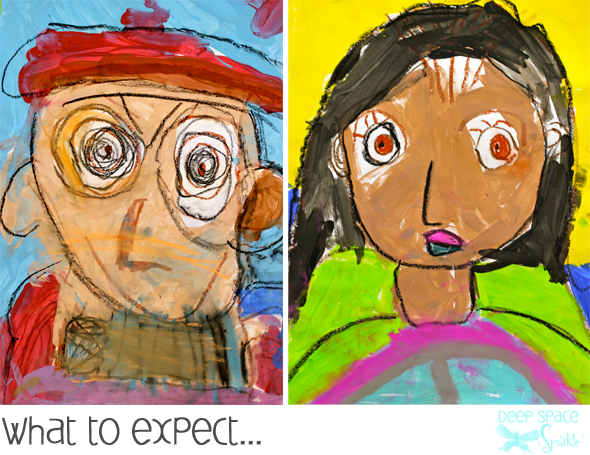
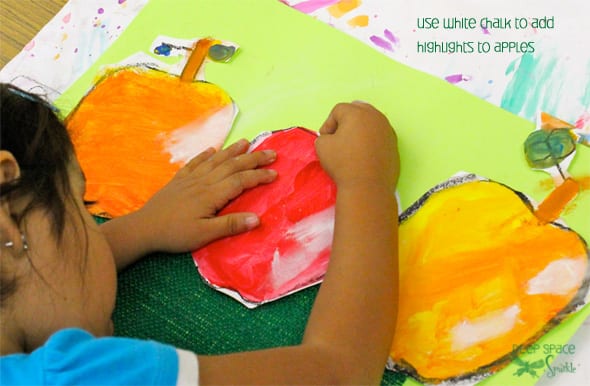
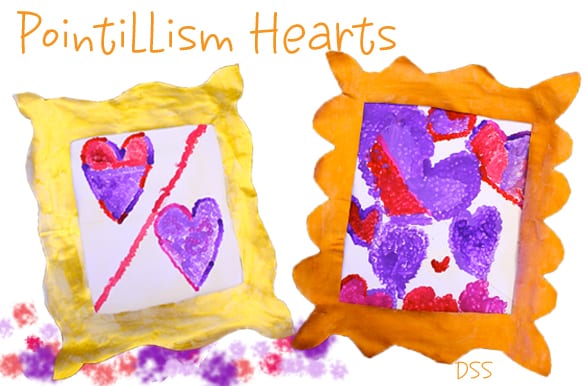








I tried paper weaving with kindergarten kids this year. Although a select few did well, it was too advanced for most of the kids, which surprised me because I had “pinned” so many kindergarten weavings from all over the web. I actually had three kids burst into tears in frustration. Their chubby little fingers couldn’t get over-under-over-under, or they didn’t really understand that concept so it wasn’t really woven, or they got bored with the repetition of it. I love weaving and will try it again, but next time not until mid-way through first grade at the earliest, and with wider and fewer paper strips.
I SO hear what you are saying! I did weaving this year, too, and was surprised at how hard it was for my students to get going. I was looking at all the fab projects on Pinterest, just like you and thought how hard could they be. In my ecourse, Beyond the Basics, we did weavings last week. I spent quite a bit of time last year sorting through the best instruction strategies. I finally got it!
I am a kindergarten teacher who teaches lots of art. For the first time ever I used charcoal and did a still life of pears with my students. We watched a video on drawing and shading a sphere (YouTube). Then I brought on pears and we discussed the shadows and light. Then the students took off. The results were incredible.
Oh…this sounds so wonderful!
I have NEVER used charcoal. You just inspired me to try.
My worst lesson (creating textured effects using paint scraper tools) turned into one of my best ever projects. An unsuccessful session using foam paint rollers to stamp circular shapes and paint scrapers to add texture, failed to excite the children and produced uninspiring results. However, 2 weeks later these dreary papers were transformed by cutting them into wavy strips and attaching them to a long sheet of paper to produce the backdrop for a wonderful “under the sea” collage: http://hannahsartclub.wordpress.com/2013/03/02/slippery-slipper-fish-under-the-sea-collage-feb-2013/
I fell in love with two lessons I found on blogs and Pinterest and couldn’t wait to introduce them to 3rd grade students. One was a wonderful weaving on an illustrated plate. It looked fabulous and I was sure would be a hit. I’ve always done burlap weavings in the past, this was so much more inspired. The 3rd graders struggled with the process like I have never seen before. There were only about three real successes. Those were as beautiful as I’d thought they would be. The second lesson was on of Phy’s blog: There’s a Dragon in my classroom. It was a simple perspective city created by drawing arrows. My students struggle with rulers so this felt like a good practice with rulers that would be instant success. Again, the basics of using the ruler frustrated a great many of the group and then when I ask then to extend it by coloring in warm and cool colors it completely put one boy over the edge and put him to tears. I loved the finished projects and many were beautiful but it was a painful process.
We had success drawing panda bears after we came back from a class trip to the Zoo. The panda bears are on lone to our Zoo from China so it was pretty exciting to see them live. We drew them and then coloured them with charcoal and chalk pastel. The panda bears had green bamboo in their hands. They even laminated super well!
My kinders did the Penguin project this year and it was so fun. Everyone was successful. Art that filled the page and lots of personality in those penguins. Including a penguin that had a very colorful sombrero! I have to admit actually really liked your Apple project. It was perfect for 3-4 weeks into school when things are still settling in. It required cutting which is always a good thing. And a nice intro to some successful color mixing. I did have the children add white paint when they painted the apples to show where the “shiny” part would be. I also let them select their own color of burlap from 4 colors and their own background color from 4 colors – starting them on the path of making choices. But the best part of the project was the beautiful book you shared with the cut paper art! I bought a copy for the kindergarten room and it was a favorite for the children to sit and look at!
The Snowy Day was a favorite project and a huge success this year! Helped by the fact that the kinders had a chance to see the Ezra Jack Keats 50th anniversary exhibit in San Francisco. We did the project first. They were preparing for their “big” trip so they were so attentive to learn all about Ezra Jack Keats and his artwork and illustrations. I loved your idea of chalk and mod podge for the background. What a fun way to show how different media changes the way things look without being complicated. And then cutting out the figures without lots of detail and relying on shape and color – this was perfect. Because of the field trip we did a second collage when they returned – My Cat – another Ezra Jack Keats book incorporating things they learned about close ups, drawing “off-the-page” patterned paper and silhouettes, We used liquid water colors for the background/setting and then the remainder of the project was all collage.
I really enjoyed teaching your paper weaving project from your video. I showed the video and the kids got busy right away. I have taught yarn weaving to fourth graders for 8 years, and paper weaving was a lot more successful from the very beginning.
That said, there are still a couple of kids in 4th grade who just don’t get weaving the first, second, third time. Even paper weaving. We also had some perfectionist kids who had to snip each line perfectly, some who insisted on coloring with the tip, not the side of the pastel. As a result, we had some kids take four sessions to finish.
Hey,
I’m glad I found this site and your comment about how you like to make new lessons each year. I am at a new job at a Navajo ReZ and we have another new principal this year. She looked at me with a slight bewilderment when I said that I don’t like to do the same lessons every year. I teach 700 kids. We have an odd schedule; we teach 1/4 of the students for one quarter…every day for 30-40 minutes. The other 3 specials teachers re-use their lessons every 1/4. I have worked in other schools in other states and overseas and have always tried to find new lessons…only re-useing some of the ones I think went well or changing it up a bit…
Aug 30, 2013
Hello, Sparkle,
A winner with my older children was when we turned 2-D animal drawings into 3-D sculptures by folding the legs dow and necks up. We had been studying Calder’s stabiles and made our own from poster board with colored marker patterns. It all fit into a 45 minute class.
Your projects and ideas are wonderful. But it is easier to understand the process when you know the art standards for each grade and age. Is there any information about it in your blog?
Hi! We have all the art standards for each grade level as a resource (along with many more) inside The Sparkler’s Club for our members. To find out more about The Sparkler’s Club join our waitlist.